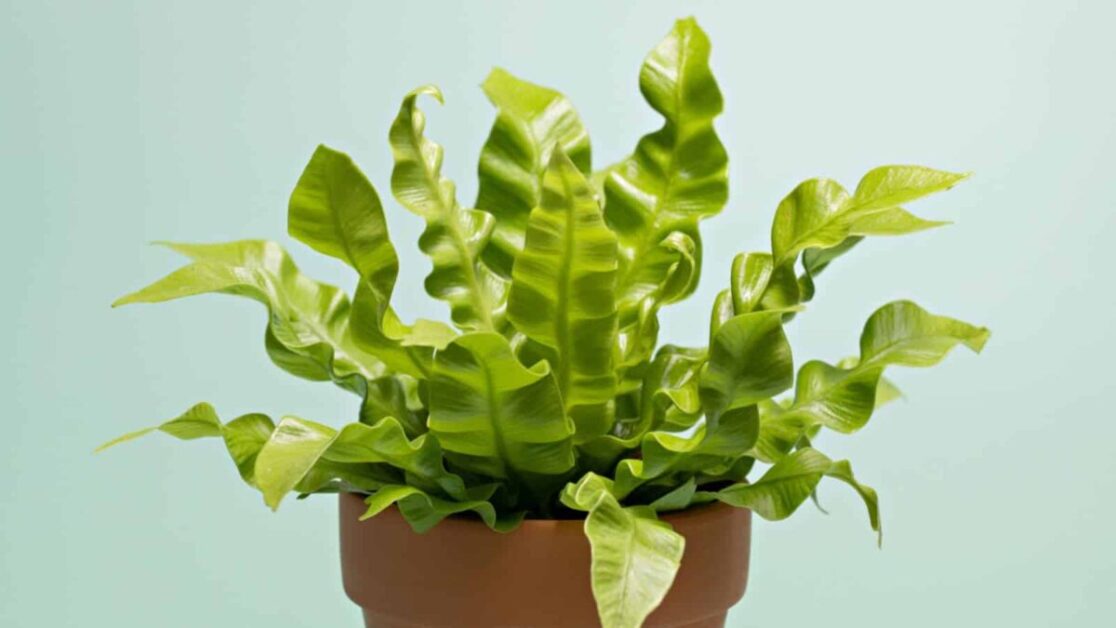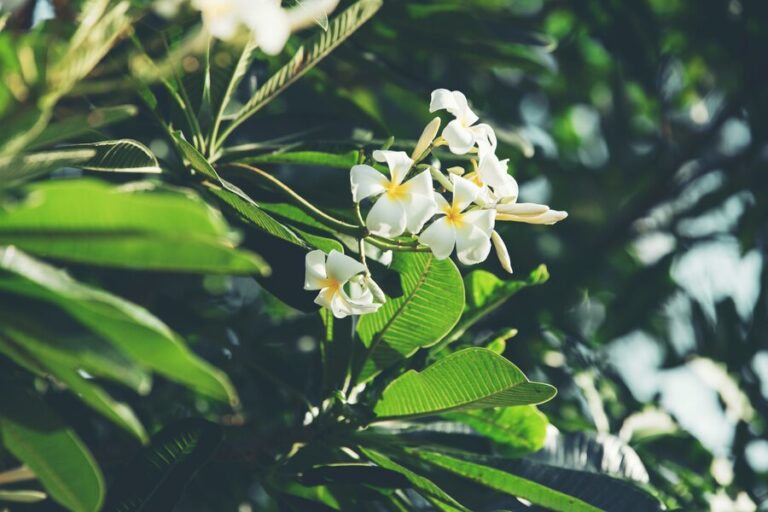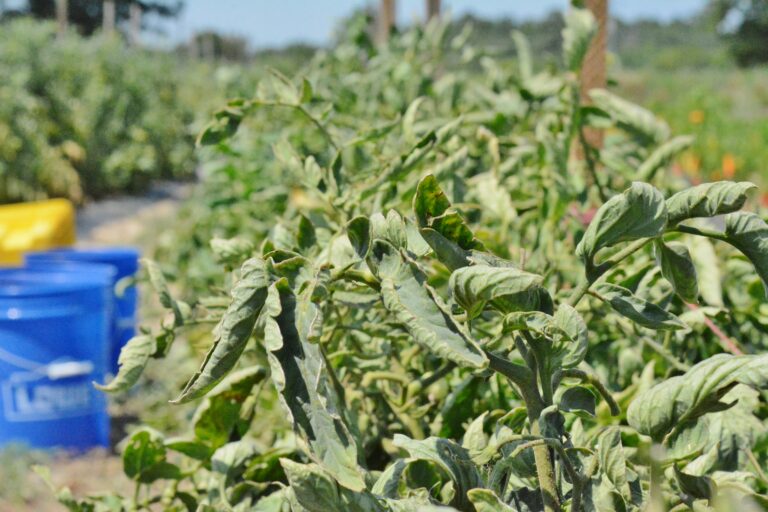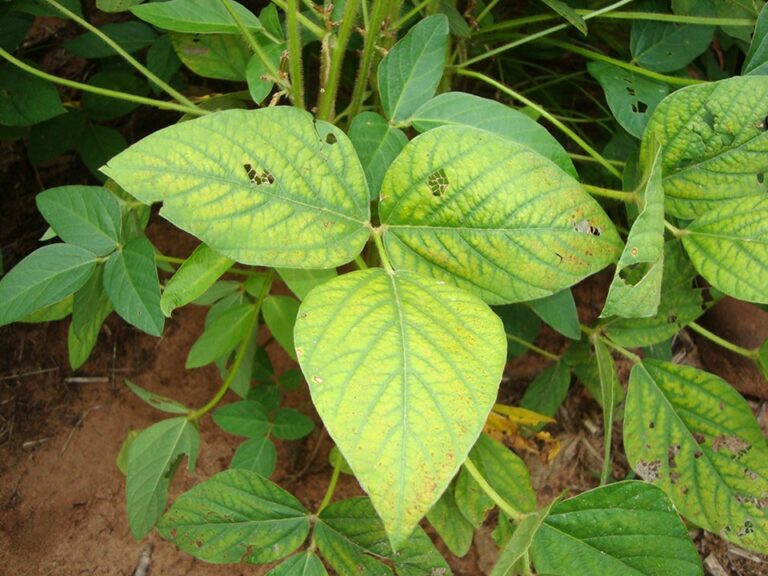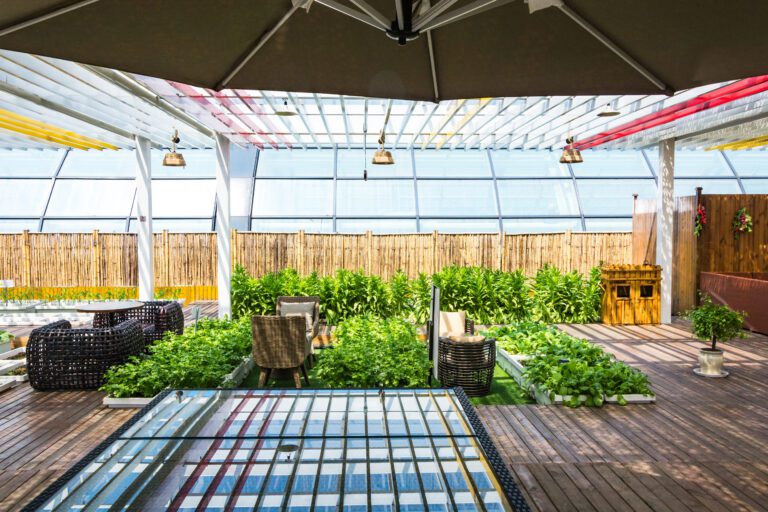Birds Nest Fern: Care and Cultivation
Understanding the Birds Nest Fern: An Overview
The Birds Nest Fern, scientifically known as Asplenium nidus, is a fascinating and captivating plant that belongs to the family Aspleniaceae. Named for its unique appearance, this fern features long, glossy fronds that emerge from a central rosette resembling a nest, hence its common name. Native to the tropical rainforests of Southeast Asia, the Birds Nest Fern has gained popularity among gardening enthusiasts for its striking foliage and relatively low-maintenance nature.
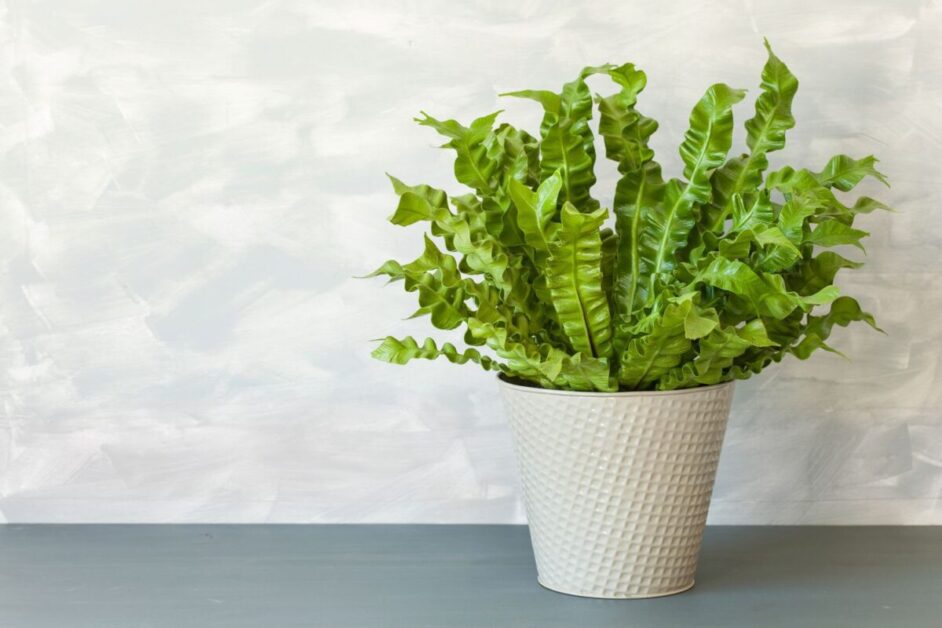
One of the most distinctive features of the Birds Nest Fern is its ability to adapt and thrive in various growing conditions. While it typically flourishes in the warm and humid environments of its natural habitat, it can also adapt to lower levels of light and tolerate drier conditions when necessary. This adaptability makes the Birds Nest Fern a versatile choice for indoor gardening, as it can be cultivated in a wide range of settings, from bright and indirect light to low-light areas. Additionally, its preference for high humidity levels makes it an excellent choice for bathrooms and kitchens, where moisture levels tend to be higher.
The Ideal Growing Conditions for Birds Nest Ferns
Birds Nest Ferns are tropical plants that thrive in warm, humid environments. To provide the ideal growing conditions for these ferns, it is important to recreate their natural habitat to the best of our ability. This can be achieved by maintaining a temperature range of 65-80°F (18-27°C) and relative humidity between 50-70%. These ferns prefer bright, indirect light, so placing them near a window with filtered sunlight or providing artificial grow lights can ensure optimal growth.
In terms of soil, Birds Nest Ferns require a well-draining and nutrient-rich medium. A good mix often consists of equal parts peat moss, perlite, and high-quality potting soil. This combination allows for proper air circulation, moisture retention, and nutrient absorption for the ferns. Additionally, it is important to choose a pot with drainage holes to prevent waterlogging and root rot. Regularly misting the fronds or placing a tray with water near the plant can help maintain the desired humidity level.
Choosing the Right Soil for Your Birds Nest Fern
When it comes to choosing the right soil for your Birds Nest Fern, it’s important to consider its natural habitat. Native to tropical rainforests, these ferns thrive in loose, well-draining soil that mimics the conditions of their native environment. A mixture of peat moss, orchid bark, and perlite is commonly recommended as an ideal soil blend for Birds Nest Ferns.
Peat moss retains moisture while allowing excess water to drain away, preventing overwatering and root rot. Orchid bark provides aeration and helps create a loose soil structure, allowing the fern’s roots to breathe. Perlite, a lightweight volcanic rock, further improves drainage and prevents the soil from becoming compacted. By using this combination of ingredients, you can create a soil mix that not only provides the necessary support for your Birds Nest Fern but also allows for proper air circulation and moisture retention.
Watering Techniques for Birds Nest Ferns
Watering is a crucial aspect of caring for your birds nest fern, as it directly affects its health and overall growth. These ferns thrive in humid environments, so it’s important to provide them with regular moisture. When it comes to watering techniques, consistency is key.
To ensure the optimal watering for your birds nest fern, it’s essential to strike a balance between keeping the soil moist and avoiding waterlogged conditions. Overwatering can lead to root rot and other water-related issues, while underwatering can cause the fern to suffer from dehydration.
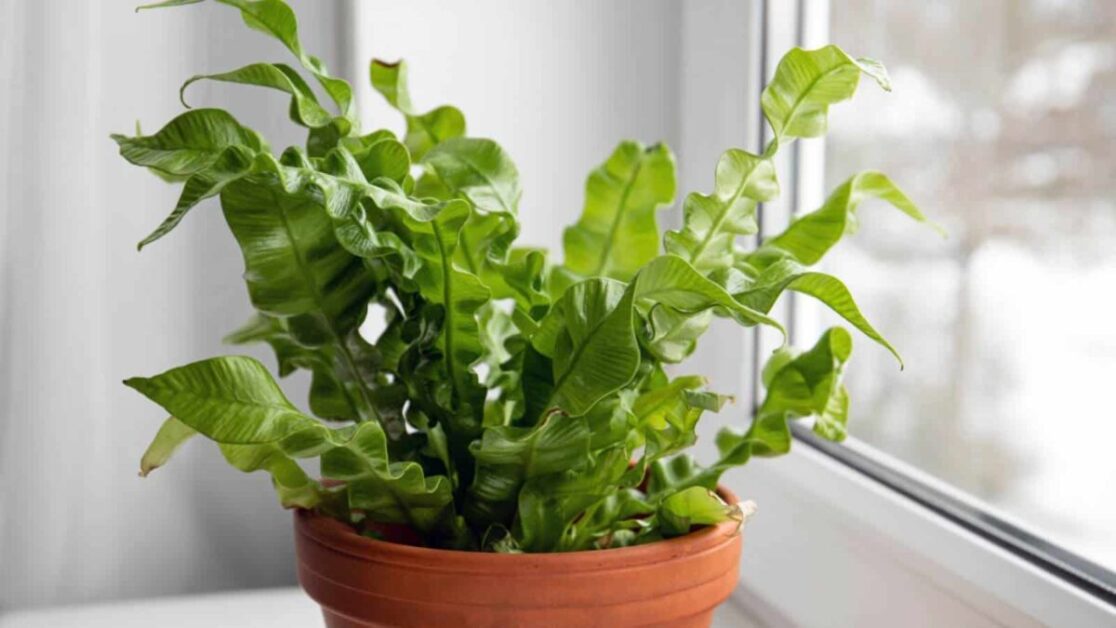
To maintain the right moisture levels, check the top inch of the soil regularly. If it feels dry to the touch, water your fern thoroughly. Ensure that the water is evenly distributed throughout the root system and that any excess water drains away. It’s advisable to use room temperature or lukewarm water, as very cold or hot water can shock the plant. Additionally, take note of any changes in your fern’s appearance, such as wilting or browning fronds, as these may indicate watering problems that need to be addressed promptly.
Fertilizing Your Birds Nest Fern: Dos and Don’ts
Dos and Don’ts for Fertilizing Your Birds Nest Fern
Fertilizing your birds nest fern can be an effective way to ensure optimal growth and vibrant foliage. However, it’s important to follow a few dos and don’ts to avoid any potential harm to your plant. Here are some guidelines to keep in mind when fertilizing your birds nest fern:
Dos:
1. Use a balanced fertilizer: Opt for a balanced, water-soluble fertilizer specifically designed for ferns. This will provide the necessary nutrients, such as nitrogen, phosphorus, and potassium, to support healthy growth. Follow the instructions on the fertilizer packaging regarding the dilution ratio and frequency of application.
2. Apply fertilizer during the growing season: The birds nest fern typically goes through a growth phase during the warmer months. As a general rule, fertilize your plant every one to two months from spring through summer. This will provide the necessary nutrients to support robust foliage development.
3. Dilute the fertilizer properly: When preparing the fertilizer solution, make sure to follow the recommended dilution ratio. Over-fertilizing can lead to fertilizer burn and damage the fern’s delicate roots. It’s always better to err on the side of caution and apply a slightly weaker solution than to risk overfeeding.
Don’ts:
1. Don’t fertilize during the dormant period: Birds nest ferns have a natural period of dormancy during colder months. During this time, the plant’s growth slows down, and it requires less nutrients. Refrain from fertilizing during this period to allow the fern to rest and conserve energy.
2. Avoid excessive fertilization: While it’s important to provide essential nutrients, too much fertilizer can be detrimental to your birds nest fern. Over-fertilizing can lead to leaf burn, root damage, and even death of the plant. Always follow the recommended dosage and resist the temptation to apply more, thinking it will promote faster growth.
3. Don’t neglect regular watering: Fertilizer should not replace proper watering practices. It’s crucial to maintain a consistent watering routine for your birds nest fern to avoid over or under-watering. Water your fern thoroughly before applying fertilizer to prevent the roots from absorbing concentrated nutrients, which could potentially harm the plant.
By following these dos and don’ts, you can ensure that your birds nest fern receives the right amount of nutrients for healthy and vibrant growth. Remember, a balanced approach is key to maintaining the well-being of your fern and enjoying its beautiful foliage in your indoor or outdoor space.
Propagation Methods for Birds Nest Ferns
Propagation is an essential method for expanding your collection of beautiful Birds Nest Ferns. By understanding and implementing effective propagation techniques, you can enjoy the satisfaction of watching your ferns multiply and thrive. There are two primary methods for propagating Birds Nest Ferns: spore propagation and division.
Spore propagation involves collecting spores from mature fronds and nurturing them until they develop into new ferns. This technique requires careful attention to detail and patience, as it typically takes longer for spore-propagated ferns to grow into mature plants. On the other hand, division is a quicker and more straightforward approach. It involves separating an established fern into smaller sections, each with its own root system, which can then be potted individually. This method allows for the efficient reproduction of healthy and mature Birds Nest Ferns.
When selecting a propagation method, consider the time and resources you have available, as well as your experience level. Both spore propagation and division have their advantages and challenges, so take into account your personal preferences and goals. Whichever method you choose, following proper techniques and providing suitable growing conditions will lead to successful propagation and ultimately a flourishing collection of Birds Nest Ferns.
Pruning and Maintenance Tips for Birds Nest Ferns
Pruning and Maintenance Tips for Birds Nest Ferns
Birds Nest Ferns are a captivating addition to any indoor garden, bringing a touch of lush greenery and tropical charm. Proper pruning and maintenance are essential for keeping these ferns healthy and thriving. Here are some expert tips to help you effectively care for your Birds Nest Ferns.
When it comes to pruning, Birds Nest Ferns require minimal intervention. However, it’s important to remove any dead or yellowing fronds regularly. This not only enhances the plant’s aesthetic appeal but also helps prevent the spread of diseases. Use clean, sharp pruning shears to make clean cuts close to the base of the stem. Avoid cutting into healthy green fronds, as this can impede the fern’s growth.
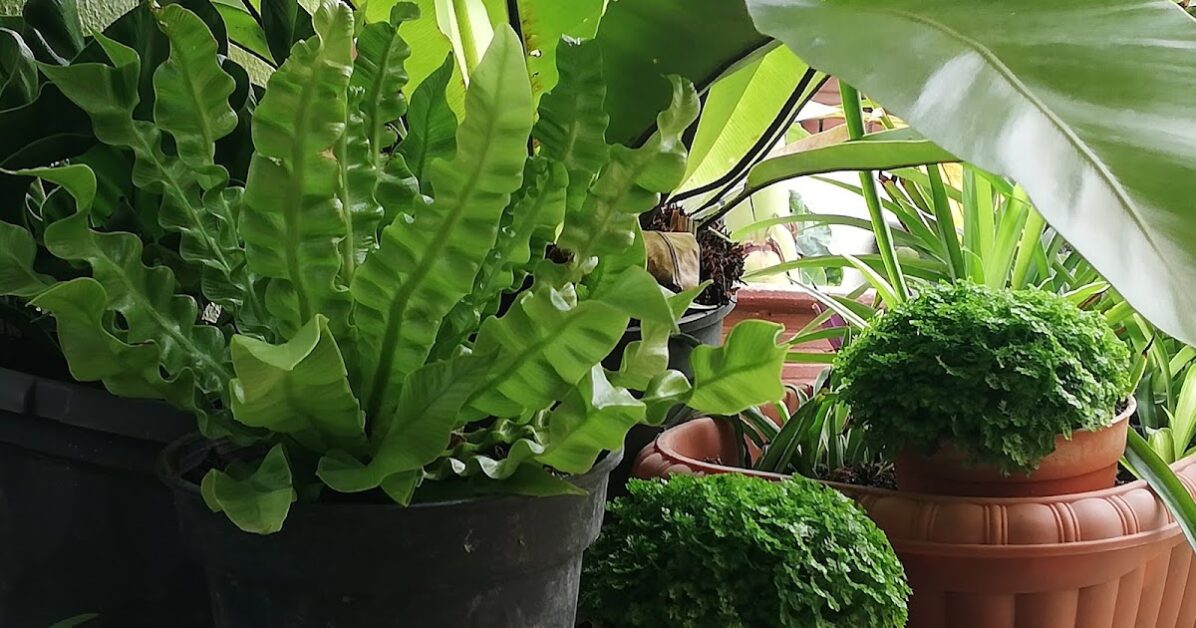
In terms of maintenance, Birds Nest Ferns appreciate a consistent environment with indirect, filtered light. Keep them away from direct sunlight, as it can scorch their delicate fronds. These ferns thrive in warm temperatures ranging between 60°F to 75°F (15°C to 24°C). Additionally, maintaining a humidity level of around 50% is crucial for their optimal growth. Misting the fronds regularly or placing the ferns on a pebble tray filled with water can help create the desired humidity. Ensure the tray doesn’t directly touch the water to prevent root rot.
Remember, proper pruning and maintenance play a significant role in the overall health of your Birds Nest Ferns. By following these tips, you can enjoy a flourishing fern that adds a touch of natural beauty to your indoor oasis.
Dealing with Common Pests and Diseases in Birds Nest Ferns
Common pests and diseases can pose a threat to the health and well-being of your birds nest ferns, but with the right knowledge and proactive measures, you can effectively deal with these issues and keep your plants thriving. One of the most common pests that affect birds nest ferns is the mealybug. These tiny insects feed on plant sap, causing stunted growth and yellowing of leaves. To tackle mealybug infestations, isolate affected plants and treat them with an insecticidal soap or neem oil spray, carefully following the instructions on the product label. Regularly inspecting your ferns for any signs of mealybugs and promptly addressing any infestations is crucial for ensuring their continued health.
In addition to pests, diseases can also affect the overall well-being of your birds nest ferns. One such disease is the root rot, which is caused by overly wet conditions and poor drainage. If you notice yellowing or wilting leaves, accompanied by a foul odor and mushy roots, your fern may be suffering from root rot. To prevent root rot, it is essential to provide your plants with well-draining soil and avoid overwatering. If root rot has already set in, you may need to carefully remove the affected roots and repot the fern in fresh, well-draining soil. Ensuring that your ferns receive the right amount of water and are not sitting in wet soil for prolonged periods will greatly reduce the risk of root rot and other fungal diseases.
Here is a atble about the common pests and diseases of bird nest fern:
| Pest/Disease | Description | Symptoms | Management |
|---|---|---|---|
| Scale Insects | Small, armored or soft-bodied insects on fronds | Yellow spots, sticky residue on fronds | Remove with a soft brush or cloth, neem oil, insecticidal soap |
| Mealybugs | Small, white, cottony insects on fronds | White, cottony masses on fronds | Remove by hand, neem oil, insecticidal soap |
| Spider Mites | Tiny arachnids, often webbing on undersides of leaves | Yellow stippling, fine webbing on leaves | Spraying with water, neem oil, insecticidal soap |
| Root Rot (Fusarium, Rhizoctonia) | Fungal infection in the roots | Wilting, yellowing, root discoloration | Improve drainage, avoid overwatering, fungicide |
| Bacterial Leaf Blight | Bacterial infection on leaves | Dark brown or black spots on fronds | Remove infected leaves, copper-based fungicide |
| Leaf Spot (Cercospora) | Fungal disease affecting leaves | Brown or black spots with yellow halos | Prune affected fronds, fungicide application |
| Aphids | Small, soft-bodied insects on young fronds | Curling, distortion, sticky residue on leaves | Hose off with water, neem oil, insecticidal soap |
| Slugs and Snails | Mollusks feeding on young fronds and foliage | Irregular holes in leaves, slime trails | Handpick, use baits, apply diatomaceous earth |
Managing Temperature and Humidity for Optimal Fern Growth
Temperature and humidity play a crucial role in ensuring optimal growth for birds nest ferns. These ferns are native to tropical regions, where they thrive in warm and humid conditions. Maintaining the right temperature and humidity levels is essential to replicate their natural habitat and promote healthy growth.
Birds nest ferns prefer temperatures between 60°F and 80°F (15°C to 27°C). They can tolerate slightly higher temperatures during the day, but it’s important to provide cooler temperatures at night. Avoid exposing them to extreme temperature fluctuations, as this can stress the plant and lead to leaf damage. It’s also important to protect them from drafts or cold air that may be present near doors or windows.
In terms of humidity, birds nest ferns love moisture. They prefer a humidity level of around 50% to 80%. Dry indoor environments can be challenging for these ferns, as they are used to high humidity in their natural habitats. To increase humidity around your fern, you can use a humidifier or place a tray filled with water near the plant. Misting the leaves periodically can also help create a more humid environment. By closely monitoring the temperature and humidity and making necessary adjustments, you can provide the ideal conditions for your birds nest fern to thrive.
Watch the video to know more about birds nest fern.
Best Placement Options for Birds Nest Ferns in Your Home
One of the key factors for the successful growth of birds nest ferns is choosing the right placement in your home. These unique ferns thrive in bright, indirect light, making them an ideal choice for areas that receive filtered sunlight throughout the day. Placing your birds nest fern near east-facing or north-facing windows is recommended, as it allows them to receive gentle morning or afternoon light without being exposed to direct sunlight, which can scorch their delicate fronds.
Another crucial aspect to consider is the humidity level in the chosen location. Birds nest ferns prefer high humidity environments, which mimic their natural habitat in tropical rainforests. Placing your ferns in areas with naturally higher humidity, such as kitchens or bathrooms, can provide the necessary moisture for their lush growth. Alternatively, you can create a humid microclimate by using a humidifier or placing a tray filled with water near the plants to boost the surrounding humidity.
Potting and Repotting Birds Nest Ferns: Step-by-Step Guide
Potting and repotting birds nest ferns is a crucial aspect of their care, ensuring their optimal growth and health. When it comes to potting your birds nest fern, using a well-draining potting mix is essential. A mixture of peat moss, perlite, and compost can provide the right combination of moisture retention and aeration necessary for the fern’s roots.
Before repotting your birds nest fern, it’s important to assess whether it has outgrown its current container. Signs that it may be time for repotting include roots poking out of the drainage holes or the fern becoming top-heavy. When repotting, select a slightly larger pot with good drainage and fill it with the appropriate potting mix. Gently remove the fern from its current container, being careful not to damage the delicate fronds or root system. Place it in the new pot, ensuring that the crown is level with the soil surface. Then, fill in the gaps with additional potting mix, lightly pressing it down to secure the fern in place.
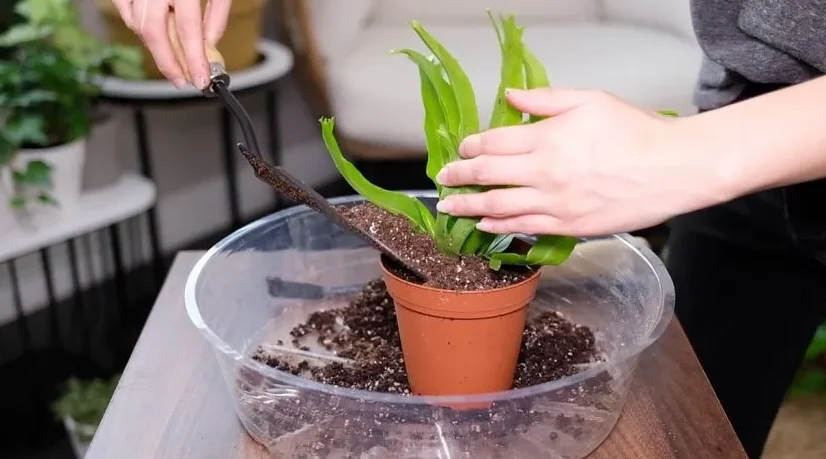
Remember, proper potting and repotting techniques are vital for the overall well-being of your birds nest fern. By following these step-by-step instructions, you can provide your fern with a stable and conducive environment for growth.
Understanding the Different Varieties of Birds Nest Ferns
Birds Nest Ferns (Asplenium nidus) are a fascinating group of plants that offer a wide range of varieties, each with its own unique characteristics. Understanding the different varieties of Birds Nest Ferns can help gardeners make informed choices and create stunning displays in their homes or gardens.
One popular variety is the ‘Austral Gem,’ known for its vibrant green fronds and compact growth habit. With its tightly clustered foliage, this fern adds a touch of elegance to any space. Another noteworthy variety is the ‘Victoria,’ which features large, broad fronds that give it a more dramatic appearance. This variety is often favored for its ability to thrive in low-light conditions, making it an excellent choice for indoor plant enthusiasts.
Aside from these varieties, there are also a range of Birds Nest Ferns with unique frond shapes and textures. The ‘Fluffy Ruffles’ variety, for example, has fronds that are deeply lobed and resemble ruffled feathers. The ‘Curly Wave’ variety, on the other hand, has fronds that curl and twist, creating a visually dynamic display.
With such a diverse selection of varieties to choose from, gardeners can explore a myriad of options for incorporating Birds Nest Ferns into their indoor and outdoor spaces. Whether you prefer a classic, compact variety or a more exotic frond shape, there is a Birds Nest Fern that will suit your taste and style.
Troubleshooting Common Issues in Birds Nest Fern Care
Birds Nest Ferns are generally low-maintenance plants, but occasionally, they may encounter some common issues that can affect their growth and appearance. One common problem is yellowing or browning fronds. This can occur due to a variety of factors, including overwatering, underwatering, excessive sunlight, or improper humidity levels. To address this issue, it is important to ensure that your Birds Nest Fern is receiving the right amount of water – neither too much nor too little. Additionally, providing adequate shade and maintaining humidity levels between 50% and 80% can help promote healthy frond growth and prevent discoloration.
Another problem that gardeners may encounter is root rot in Birds Nest Ferns. Root rot can be caused by overwatering or poor drainage, leading to soggy soil that deprives the roots of oxygen. The first step in addressing root rot is to carefully inspect the roots for signs of decay. If affected, it is crucial to remove the damaged roots and repot the fern in fresh, well-draining soil. Adjusting the watering schedule to prevent waterlogged conditions, such as allowing the top inch of soil to dry before watering again, can help prevent future incidences of root rot. It is also advisable to discard any excess water that collects in the plant’s saucer or tray to avoid waterlogging.
Here are some of ther issues that can be seen while growing birds nest fern:
| Common Issue and Solutions | Description |
|---|---|
| Yellowing or Browning Fronds | – Causes: Overwatering, underwatering, excessive sunlight, or improper humidity levels. |
| – Solution: Adjust watering to provide the right amount—neither too much nor too little. Provide shade and maintain humidity between 50% and 80%. | |
| Root Rot | – Causes: Overwatering or poor drainage leading to soggy soil and oxygen deprivation for roots. |
| – Solution: Carefully inspect roots for decay, remove damaged roots, and repot in fresh, well-draining soil. Adjust watering schedule to prevent waterlogged conditions. Discard excess water from saucer or tray. | |
| Pest Infestation | – Types: Scale insects, mealybugs, aphids, spider mites, slugs, snails. |
| – Symptoms: Visible pests on fronds, leaf damage, or irregular holes. | |
| – Solution: Use insecticidal soap, neem oil, or other appropriate pesticides. Handpick larger pests. Ensure good plant hygiene. |
Enhancing the Aesthetic Appeal of Birds Nest Ferns
To enhance the aesthetic appeal of your birds nest ferns, there are several key factors to consider. First and foremost, lighting is crucial. These ferns thrive in bright, indirect light, so placing them near a window that provides filtered sunlight is ideal. Avoid placing them in direct sunlight, as this can lead to scorched or discolored leaves.
In addition to lighting, proper humidity levels are essential for the health and beauty of your birds nest ferns. These plants thrive in high humidity environments, so misting the leaves regularly or placing them near a humidifier can help create the optimal conditions. You can also consider placing a tray filled with water underneath the fern’s pot, ensuring that the water level does not touch the bottom of the pot.
To further enhance the aesthetic appeal of your birds nest fern, you can also consider adding some companion plants. Choose plants with similar growth requirements, such as other tropical foliage plants or ferns. Not only will this create a visually pleasing display, but it can also help to create a more natural environment for your birds nest fern.
Remember, by providing the right lighting, humidity, and complementary plants, you can elevate the aesthetic appeal of your birds nest ferns and create a stunning indoor display. Stay tuned for more tips and tricks to maximize the beauty and vitality of your indoor plants.
Combining Birds Nest Ferns with Other Plants: Design Ideas
Birds Nest Ferns are a versatile and stunning addition to any indoor or outdoor space. Their unique foliage and compact size make them an excellent choice for combining with other plants to create visually appealing and harmonious designs. When it comes to combining Birds Nest Ferns with other plants, there are a few key design ideas to keep in mind.
Firstly, consider contrasting textures. The feathery, nest-like fronds of the Birds Nest Fern provide a beautiful contrast to plants with larger, broader leaves or spikey foliage. Consider pairing it with plants such as Snake Plants (Sansevieria), Swiss Cheese Plants (Monstera deliciosa), or Bromeliads for an interesting textural interplay.
In addition to contrasting textures, color coordination is another important aspect to consider when combining Birds Nest Ferns with other plants. The vibrant green color of the fern’s foliage provides a perfect backdrop for plants with different shades of green or pops of color. For example, pairing Birds Nest Ferns with plants like Calathea varieties, Red Prayer Plants (Maranta leuconeura), or Purple Wandering Jew (Tradescantia zebrina) can create a visually striking and harmonious display of different shades and hues.
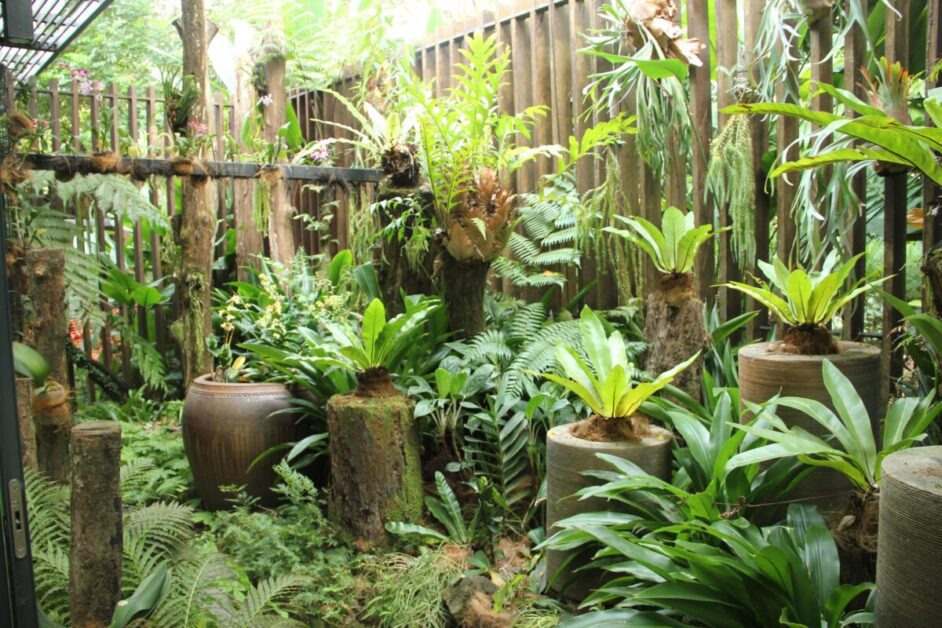
Furthermore, consider varying heights and shapes when selecting companion plants for Birds Nest Ferns. The fern’s compact and bushy growth habit can be beautifully complemented by taller, more upright plants such as Dracaena species or Areca Palms (Dypsis lutescens). This creates a visually interesting and dynamic arrangement, adding depth and dimension to your space.
When combining Birds Nest Ferns with other plants, it’s important to ensure that all the plants have similar growing requirements in terms of light, temperature, and humidity. This ensures that each plant in the design thrives and maintains its optimal health and appearance.
In conclusion, combining Birds Nest Ferns with other plants can add a touch of elegance and natural beauty to your indoor or outdoor space. By considering contrasting textures, coordinating colors, and varying heights and shapes, you can create visually captivating designs that showcase the unique qualities of the Birds Nest Fern. Remember to select companion plants with similar growing requirements to ensure the long-term success of your plant arrangements.
Expert Tips for Long-Term Success with Birds Nest Ferns
Birds Nest ferns are a popular choice for many indoor plant enthusiasts due to their unique aesthetic appeal and relatively low maintenance requirements. However, to ensure long-term success with these delicate ferns, it is essential to keep a few expert tips in mind.
First and foremost, it is crucial to provide the right amount of indirect light for your Birds Nest ferns. While they prefer bright, indirect light, direct sunlight can damage their delicate fronds. Place them near a north or east-facing window or provide filtered light with the help of sheer curtains or blinds.
Secondly, maintaining consistent humidity levels is vital for Birds Nest ferns. These ferns thrive in environments with high humidity, ideally between 50% to 80%. To achieve this, you can use a humidifier, place a tray of water near the plant, or mist the foliage regularly. Ensuring adequate humidity will help prevent browning and drying of the fronds.
By following these expert tips, you can enhance the long-term health and beauty of your Birds Nest ferns. Providing the right lighting conditions and maintaining proper humidity levels will create an optimal environment for these ferns to flourish. Remember, consistent care and attention will ensure that your Birds Nest ferns thrive and become a stunning addition to your indoor plant collection.
How often should I water my birds nest fern?
Birds nest ferns should be watered when the top inch of soil feels dry to the touch. It is important to avoid overwatering as it can lead to root rot.
Can I use tap water to water my birds nest fern?
Tap water can be used to water birds nest ferns, but it is recommended to let the water sit for 24 hours before using it. This allows any chlorine or other chemicals to evaporate, creating a better environment for the fern.
How often should I fertilize my birds nest fern?
Birds nest ferns should be fertilized every two to three months during the growing season (spring and summer). Use a balanced liquid fertilizer diluted to half strength.
Can birds nest ferns be propagated from spores?
Yes, birds nest ferns can be propagated from spores. However, it is a more complex process and requires specific conditions and patience. It is often easier to propagate them from offsets or division.
How often should I prune my birds nest fern?
Pruning is not usually necessary for birds nest ferns unless there are dead or dying fronds. Remove these fronds as needed to maintain the overall appearance and health of the plant.
What are some common pests and diseases that affect birds nest ferns?
Birds nest ferns can be affected by pests such as scale insects and mealybugs. They are also susceptible to diseases like leaf spot and root rot. Proper care and maintenance can help prevent these issues.
What temperature and humidity levels are ideal for birds nest ferns?
Birds nest ferns thrive in temperatures between 60-75°F (15-24°C). They prefer high humidity levels, ideally around 50-75%. Regular misting or using a humidifier can help maintain the required humidity.
Can birds nest ferns be placed in direct sunlight?
No, birds nest ferns prefer bright, indirect sunlight. Direct sunlight can scorch their leaves. Place them near a window with filtered light or in a shaded area of your home.
How often should I repot my birds nest fern?
Birds nest ferns generally do not require frequent repotting. They can be repotted every two to three years or when the plant has outgrown its current pot.
What are some common issues in birds nest fern care and how can I troubleshoot them?
Some common issues include yellowing leaves, brown tips, and leaf curling. These can be caused by overwatering, underwatering, improper lighting, or low humidity. Adjusting these factors can help resolve the issues.
How can I enhance the aesthetic appeal of my birds nest fern?
You can enhance the aesthetic appeal of your birds nest fern by placing it in a decorative pot or hanging basket. You can also incorporate moss or rocks around the base to create a more natural and visually pleasing display.
Can birds nest ferns be combined with other plants in a design?
Yes, birds nest ferns can be combined with other plants to create visually appealing arrangements. They pair well with other ferns, tropical plants, and low-light tolerant species. Consider their light and water requirements when selecting companion plants.

